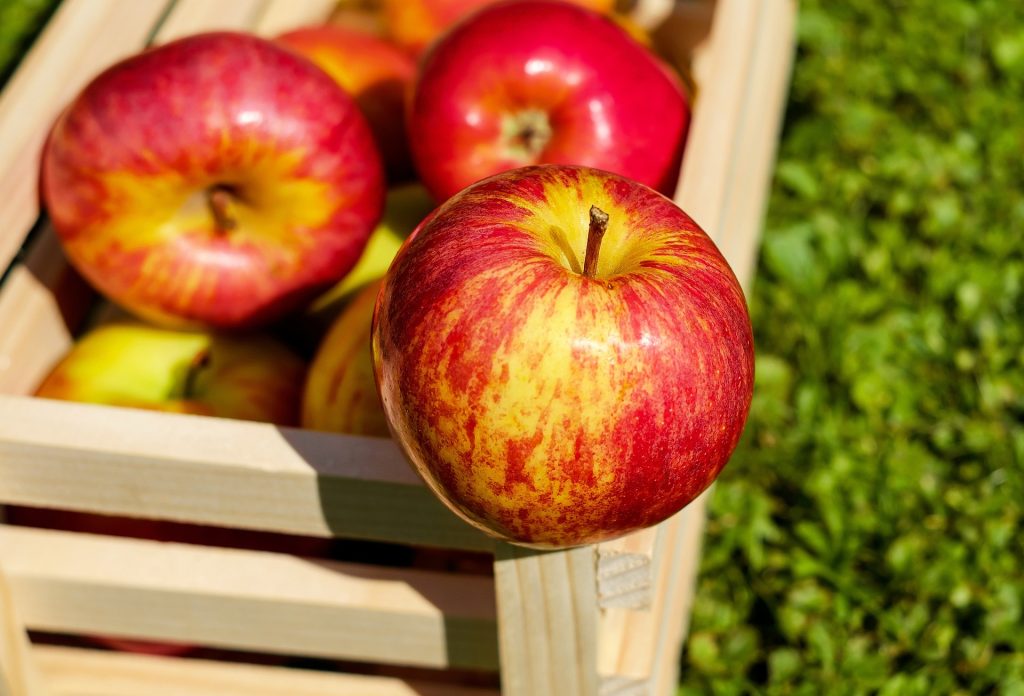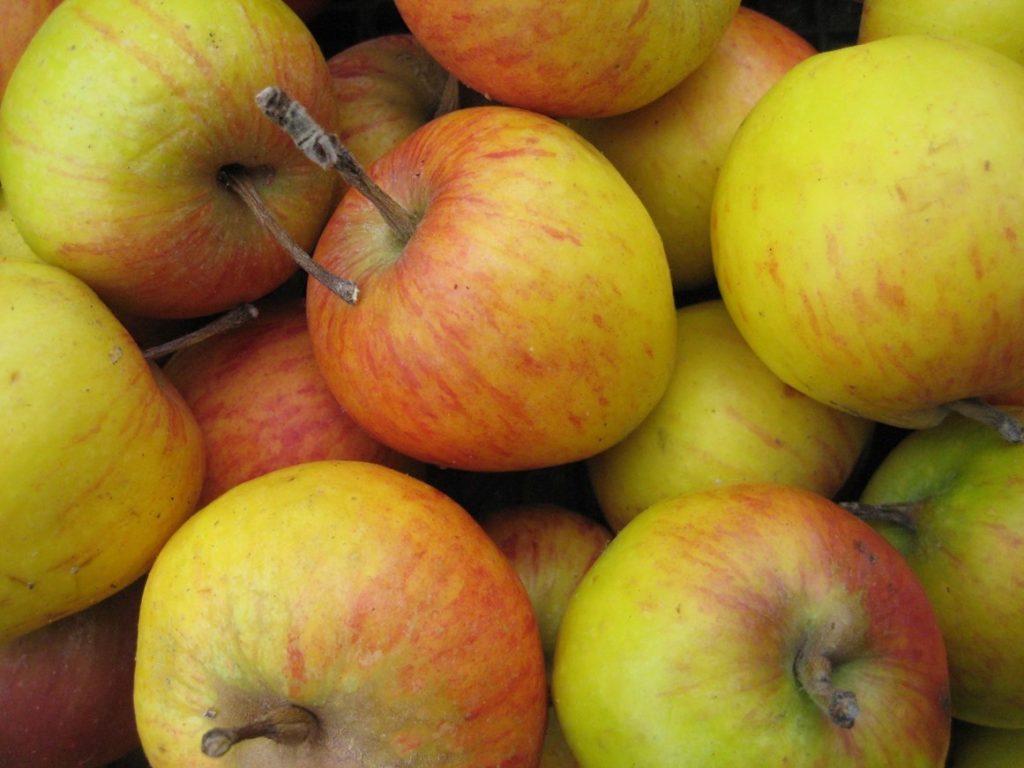I have an apple tree on my allotment that produces huge amounts of delicious apples every other year, but I have no idea what variety it is. It was already a mature tree when I took on the plot and has possibly been there since the allotments were first created in the 1970s. Apple orchards at this time of year evoke memories of autumn; shafts of the sun through the branches, the smell of fallen apples, dew on the long grass and clouds of cranefly. But sadly, whilst traditional orchards were once widespread across the country, they have been steadily disappearing over the past 100 years.
However, there has been a recent renewal of interest in old apple varieties and community orchards are helping to revive Britain’s ‘lost’ apples. The recent interest in community orchards is being driven by an interest in growing healthy local food, further encouraged by Covid lockdowns. Fruit from community orchards often goes to local meals-on-wheels services, food banks or local charities, which is timely in the current cost of living crisis. In many cases, heritage apple varieties local to the area are being planted, providing a welcome link to our food-growing heritage.
An interesting apple fact is that apple trees grown from a pip will not grow into the exact same tree that the apple containing the pip came from. The new and unique cross that grows from the pip will instead share characteristics with the parent tree. All apple trees of the same variety have been propagated through grafting and budding, forming a continuous genetic link to the past. Unless someone makes the effort to carry on grafting and growing a particular variety, the link will be broken, and it can become extinct. In the limited range of apples available in our supermarkets now, there is often little or no regional variety, many being imported from overseas. By reducing the number of varieties, food supplies can become increasingly vulnerable to pests and diseases, and heritage collections can provide a valuable genetic bank. These saved heritage varieties can be drawn on if needed to develop new disease-resistant varieties.

The UK has more than 2,000 heritage varieties of apples, with over 7500 varieties in existence across the world. Britain’s National Fruit Collection at Brogdale Farm in Kent, currently has 2,200 species of apple recorded, with discoveries still being made by apple hunters around the country. Many varieties are strongly linked with local history. For example, the ‘Knobby Russet’ is a Sussex variety, first shown to the London Horticultural Society by Haslar Capron who came from Midhurst in 1820. They were nearly extinct by the 1940s but fortunately, rediscovered after World War Two during national fruit trials. With an ‘ugly’ appearance likened to a potato, this variety is currently cultivated as part of Brighton Permaculture Trust’s National Collection in Stanmer Park. The similar but less knobbly, ‘Egremont Russet’, probably originated on the estate of Lord Egremont, Petworth, however, it was first recorded as a variety in 1872 by nurseryman J Scott of Somerset. Despite this claim, the head gardener, Fred Streeter maintained it was raised at Petworth, which was well known for its fruit, particularly in the 1800s.
A common characteristic of these and many other Sussex apples is that they grow well in the climate and soil conditions of the county. Until recently, many of them were very rare, but Brighton Permaculture Trust and other organisations have been propagating and planting Sussex heritage apple varieties in schools and community sites around the county, to ensure their future.
I may have to investigate the identity of my apple tree next summer and plant a successor!
